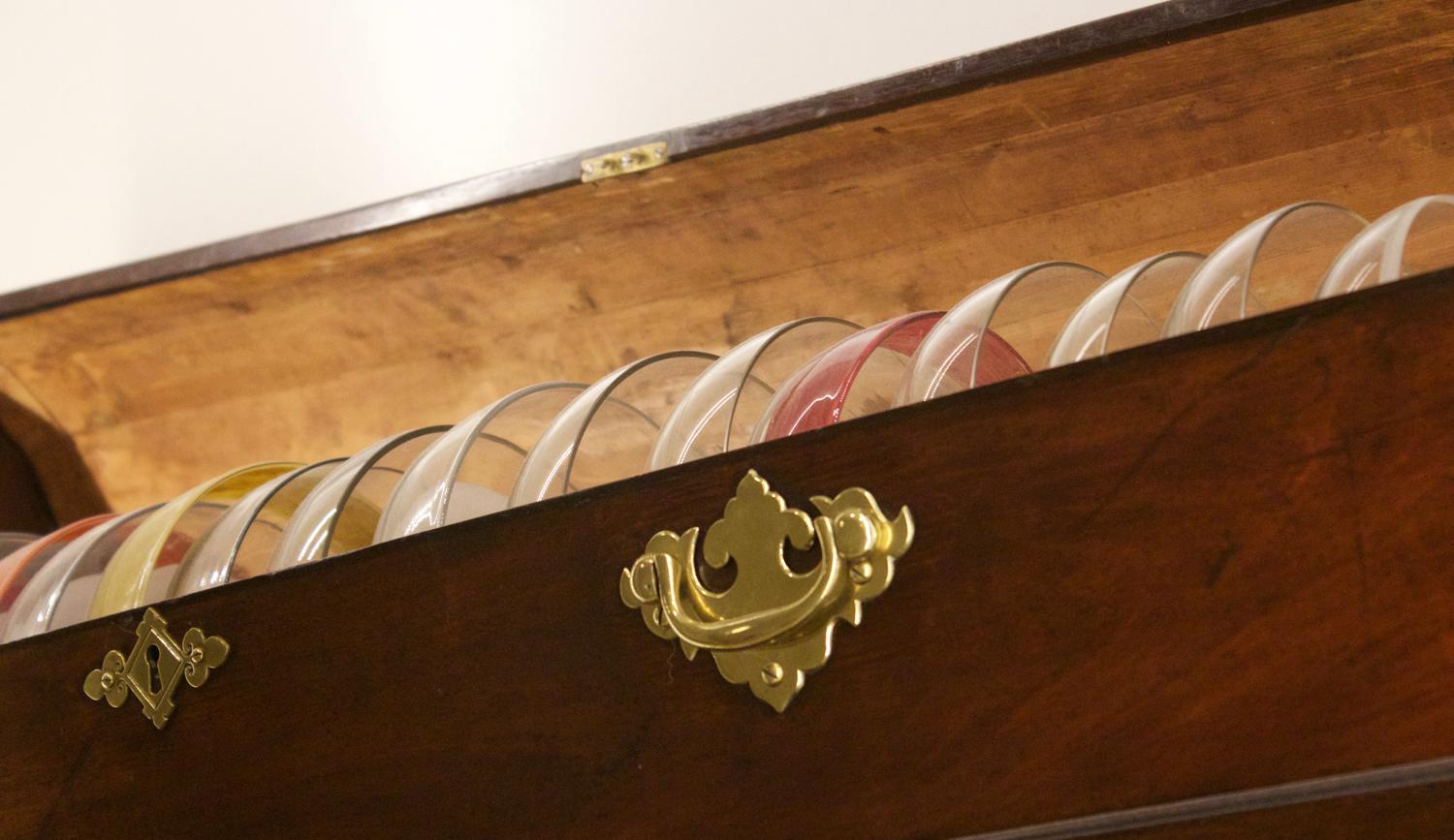
In the mid-1700s, Benjamin Franklin served as a delegate for colonial America and spent a great deal of time traveling to London and Paris. During this period, it was quite popular and entertaining for amateur musicians to perform on sets of "singing" or musical glasses. Franklin attended one of these concerts and was intrigued by the beauty of the sound. Almost immediately, he set to work applying the principles of wet fingers on glass to his own musical creation.
Ben Franklin completed his glass armonica in 1761. (Its name is derived from the Italian word for harmony.) He didn't simply refine the idea of musical glasses, which were played much like children at the dinner table play them today, with notes being determined by the amount of water in the glass. Rather, Franklin made chords and lively melodies possible on his new instrumental invention.
Working with a glassblower in London, Franklin made a few dozen glass bowls, tuned to notes by their varying size and fitted one inside the next with cork. Each bowl was made with the correct size and thickness to give the desired pitch without being filled with any water. Franklin also painted them so that each bowl was color-coded to a different note. A hole was put through the center of the glass bowls, and an iron rod ran through the holes. The rod was attached to a wheel, which was turned by a foot pedal. Moistened fingers touched to the edge of the spinning glasses produced the musical sounds.
The glass armonica was one of the most celebrated instruments of the 18th century. Franklin began to take his beloved armonica with him when he traveled and played popular Scottish tunes or original compositions for his audiences. Later, composers such as Beethoven, Mozart, and Donizetti would write music for the armonica. Because of its almost immediate popularity, the glass armonica seemed destined for permanence. But by the 1820s, it was nearly a forgotten instrument.
Over the years, some disturbing events began to be associated with the glass armonica. Some armonica players became ill and had to stop playing the instrument. They complained of muscle spasms, nervousness, cramps, and dizziness. A few listeners were also subject to ill effects; after an incident in Germany where a child died during a performance, the armonica was actually banned in a few towns. Some people thought that the high-pitched, ethereal tones invoked the spirits of the dead, had magical powers, or drove listeners mad. Others thought that lead from the crystal bowls or paint was absorbed into the musicians' fingers when they touched the glass, causing sickness. No explanation or proof was ever really given to any of these claims. Franklin himself ignored all of the controversy and continued to play the instrument until the end of his life with none of the symptoms mentioned. But the armonica's popularity never really returned to what it had been when it was first introduced.
At the time of his death in 1790, when more than 5,000 of them had been built, Ben Franklin had collected no money from his glass armonica. He refused to patent any of his inventions, saying:
"As we enjoy great Advantages from the Inventions of others we should be glad of an Opportunity to serve others by any Invention of ours, and this we should do freely and generously."
Ben certainly gave freely and generously, constantly investing time and energy to make his ideas a useful or entertaining reality. Some said the glass armonica was magical, but perhaps the man responsible for it was. Franklin made it possible to create beautiful sounds with the touch of a finger, sounds that his wife Deborah once called, "the music of the angels."
The glass armonica pictured here was constructed in London by Charles James in 1761, made from Ben Franklin's own instructions. The instrument has a mahogany case and stand, and the musical glass bowls are supported on corks along an iron rod.
Note: The objects pictured above are part of The Franklin Institute's protected collection of objects. The images are © The Franklin Institute. All rights are reserved.








